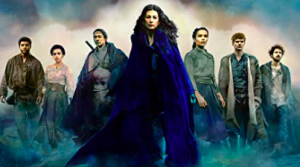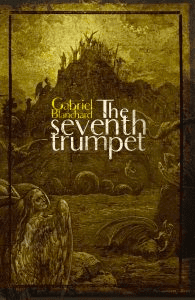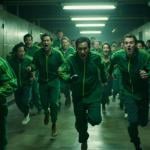With haunted houses and trick-or-treating vastly reduced, I decided to return to my tradition of thirteen recommendations for stay-at-home Halloween fun. (At least, I thought I’d made a tradition of it, but then I went back and looked and apparently I’ve only done it twice before!) Here’s my list for 2020:

13. The Masque of the Red Death, a short story by Edgar Allan Poe. A little on the nose for 2020, I admit, but it’s a classic for a reason. If you haven’t read it, it’s an excellent introduction to Poe’s fiction: the story has a dreamlike quality that makes it curiously easy to accept its bizarre plot, and it’s nice and quick.
12. King Falls AM, a podcast by The Make Believe Picture Company. I’ve become kind of a connoisseur of the “city full of paranormal happenings/beings and also there’s a gay subplot” genre of podcast—Welcome to Night Vale was arguably the first, and King Falls AM is one of its more successful heirs. The two hosts of a rural town’s late-night radio show dealing with a wide and increasing number of weird events, from hauntings to an alien abduction.
11. Dracula (2020), a Netflix miniseries by Mark Gatiss and Steven Moffat. Please be clear that I recommend only the first two episodes of this three-part series; the third is anticlimactic garbage. But the first two are great! Dr. Van Helsing’s confrontation with Dracula is brilliantly reimagined, and the cat-and-mouse between the two is electric. Enough of the original is kept to satisfy fans, while enough is recast to feel fresh and interesting. (With this and a couple of other entries, I obviously can’t link directly to them, but here is a trailer.)
10. The Day of the Triffids, a film by Steve Sekely. This 1962 sci-fi dumpster fire is my earliest memory of a so-bad-it’s-good film, and it really delivers. The premise: an unusually bright meteor shower leaves most of earth’s population blind. With them come a new, extraterrestrial species of plant. These plants, the eponymous triffids, are capable of movement—and are carnivores. Our forgettable heroes must flee or fight for their lives, against both the great mass of blinded humanity, which have become violent because [footage not found], and the dreadful triffids, which make a hilarious noise like maracas. The film can be found in its full, stupid glory on YouTube (because who the hell is renewing a copyright on that).
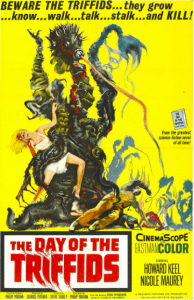
9. Goblin Market, a poem by Christina Rossetti. The Pre-Raphaëlites could be eerie when they wanted to, and Christina Rossetti wanted to. The poem tells the story of two sisters who encounter goblin merchants that sell enchanted fruits, and how their dark magic worms its way into the sisters’ lives. Its uneven rhythm, use of assonance rather than rhyme, irregularity, and recurring phrases lend it a “fae” atmosphere that suits the subject perfectly.
8. The Bright Sessions, a podcast by Lauren Shippen. This is another entry in the “paranormal town full of gay” genre, leaning more towards sci-fi than horror. The basic premise is: if people had real superpowers, they’d probably need therapy. This podcast starts out as the audio notes of a therapist, Dr Joan Bright, who works with “atypicals,” from telepaths to time travelers. It’s a delight.
7. A Choir of Lies, a novel by Alexandra Rowland. This is fantasy rather than horror, and that thematic trait is the only reason it’s not higher on the list. I bought this novel last year; it’s 452 pages, and I think I read it twice in the first two weeks I owned it. It’s the story of a traveling bard, or Chant, who has lost the joy of telling stories and is thinking of giving up his vocation altogether. He is scooped up by a professional merchant, who wants to use his rhetorical skills to artificially inflate the market for exotic flowers. But at almost the same time, another Chant arrives in the city, and she and the merchant begin a complicated battle for our narrator’s soul.
6. Carnival of Souls, a film by Herk Harvey. This cult classic influenced directors like George Romero and David Lynch. The protagonist, Mary, narrowly escapes drowning after her car plunges into a river. Thereafter, she moves to a new city to take a job as a church organist, but finds herself strangely isolated. She experiences episodes in which no one can see or hear her, and is stalked by an unfamiliar, ghoulish figure. More of an art film than a conventional story, it’s been specially praised for its score (in which the pipe organ features heavily), dream sequences, and atmosphere. A number of critics have compared it to German expressionist film, an influential school which throve in the 1920s.
5. Princess Mononoke, an anime by Hayao Miyazaki. Before Spirited Away, there was Princess Mononoke. Again more fantasy than horror, but a darker fantasy than most. In ancient Japan, the kami are receding: some seem to be dying, and some, more frighteningly, transforming into demons. A young villager, Ashitaka, receives a cursed wound from an insane boar kami, and goes in search of healing. He finds the ambitious Lady Emishi, who uses terrible iron weapons against the kami to prosper her people, and a feral girl called the Mononoke, who fights for the forest against the city. (Here is the subtitled version of the Japanese trailer, because while we’re here, subtitles are always always always better than dubs.)
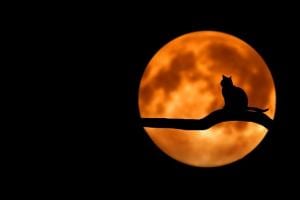
4. Interview With the Vampire, a film by Anne Rice. (That is, the screenplay and the novel it’s based on are both by Anne Rice; she didn’t direct it.) In the eighteenth century, Louis meets a charming and seductive vampire, Lestat. Bereft of his family, Louis consents to be made a vampire. For decades, the two strive for control while Louis searches for meaning in his living death. The novel is a pleasure, if you care for vampire stories, but honestly the film is better—tighter, better paced, less confusing. The performances are also top-notch. (Here is a trailer, from the depths of 1994.)
3. Three Versions of Judas, a short story by Jorge Luis Borges. This is part of a genre I think I’ve only seen from two other authors, J. R. R. Tolkien and H. P. Lovecraft: namely, the genre of fictional scholarship. The story is about an imaginary theologian and the three increasingly heterodox interpretations of Judas he advances over his career. Reinterpretations of Judas are a dime a dozen, but Borges actually makes it interesting and even shocking.
2. The Magnus Archives, a podcast by Rusty Quill. The audio notes of the head archivist of the Magnus Institute, an organization that researches statements of purported encounters with the paranormal. This one is a lot more horror-oriented than the previous two podcasts, and has some really creative monsters and entities. There’s also a lot of background lore, which you slowly uncover alongside the archivist the further on you get. Top notch stuff.
1. John Dies At the End, a novel by David Wong, aka Jason Pargin. The first novel of the Undisclosed trilogy (also including This Book Is Full of Spiders and What the Hell Did I Just Read). Two lowlife friends in a trash-heap of a town unexpectedly become entangled in the paranormal, thanks to a drug that opens gateways between worlds. Malicious beings with a teenage sense of humor begin to chase them down, and they have nothing but their modest wits and a possibly supernatural dog to help them. Another page-turner—Wong is the kind of writer I wish I could be.



